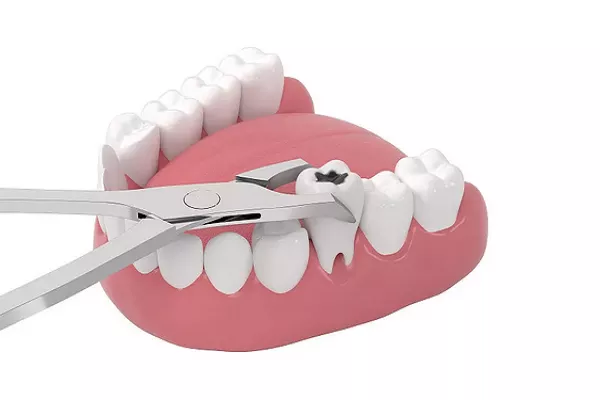A bright, white smile is a symbol of confidence and good oral health. With numerous teeth whitening methods available today, it’s essential to understand which one works best for you. From over-the-counter options to professional treatments, this comprehensive guide will explore the various teeth whitening methods, their effectiveness, safety considerations, and tips for maintaining a dazzling smile.
Understanding the Basics of Teeth Whitening
Teeth whitening is a cosmetic dentistry procedure aimed at lightening the color of teeth by removing stains and discoloration. The process involves the use of whitening agents that break down and remove stains from the tooth‘s surface or within the tooth’s structure. Teeth whitening is generally divided into two categories:
Extrinsic Whitening: This method targets surface stains caused by factors like food, beverages, smoking, and poor oral hygiene. Extrinsic stains are often responsive to teeth whitening treatments.
Intrinsic Whitening: Intrinsic stains affect the inner structure of the tooth and may result from factors like aging, genetics, trauma, and certain medications. Intrinsic stains can be more challenging to treat and may require more invasive methods.
Now, let’s explore the most common teeth whitening methods and assess their effectiveness:
1. Over-the-Counter Whitening Products
a. Whitening Toothpaste:
Effectivness: Whitening toothpaste contains mild abrasives and chemicals to help remove surface stains. While they can brighten teeth slightly over time, they are often more effective at maintaining whiteness than achieving dramatic results.
Safety: Whitening toothpaste is generally safe for daily use, but it may lead to tooth sensitivity in some individuals.
b. Whitening Strips and Trays:
Effectiveness: Over-the-counter whitening strips and trays are coated with a peroxide-based gel. They can provide noticeable whitening results over several weeks of use.
Safety: These products are generally safe when used as directed. However, they can cause tooth sensitivity and gum irritation in some cases.
2. Professional At-Home Whitening
a. Take-Home Kits:
Effectiveness: These kits typically involve custom-fitted trays filled with a professional-strength whitening gel. They offer more significant whitening compared to over-the-counter options and can achieve noticeable results in a matter of weeks.
Safety: Customized trays reduce the risk of gel contact with gums, which can minimize irritation. Some individuals may experience temporary tooth sensitivity.
3. In-Office Professional Whitening
a. Zoom! Whitening:
Effectiveness: Zoom! is a popular in-office teeth whitening procedure that utilizes a hydrogen peroxide-based gel and a special light to accelerate the whitening process. It can provide dramatic whitening results in a single office visit, often within an hour.
Safety: Zoom! is administered by dental professionals, ensuring safety and minimizing potential side effects.
4. At-Home Whitening with Custom Trays from a Dentist
a. Effectiveness: At-home whitening using custom trays provided by a dentist is highly effective. It combines professional-grade whitening gel with the convenience of home use. Results can be noticeable within a few weeks.
Safety: Custom trays are tailored to fit your teeth precisely, reducing the risk of gel contact with gums and soft tissues. Dentists provide guidance on safe and effective use.
5. Porcelain Veneers
a. Effectiveness: Porcelain veneers are thin, custom-made shells that cover the front surfaces of teeth. They can instantly change the color and appearance of teeth, providing a dramatic and long-lasting improvement.
Safety: Porcelain veneers are a permanent solution that requires removing a small amount of enamel from the teeth. It is irreversible, and the procedure should be performed by a skilled cosmetic dentist.
Which Method Works Best?
The effectiveness of teeth whitening methods depends on several factors, including the type and severity of stains, individual preferences, and budget. Here’s a general guideline:
For Mild Surface Stains: Over-the-counter products like whitening toothpaste and strips can provide satisfactory results.
For Noticeable Whitening: Professional at-home kits with custom trays or in-office treatments like Zoom! whitening are highly effective.
For Severe Stains or Dramatic Results: Porcelain veneers offer a long-lasting solution for changing tooth color and appearance.
Maintaining a White Smile
Maintaining the results of teeth whitening is crucial for a lasting bright smile. Here are some tips:
Good Oral Hygiene: Brush your teeth at least twice a day and floss daily to prevent new stains from developing.
Limit Stain-Causing Foods and Drinks: Reduce consumption of coffee, tea, red wine, and dark-colored foods that can stain teeth.
Regular Dental Check-Ups: Schedule regular dental visits for cleanings and check-ups to maintain your oral health and keep your smile bright.
Touch-Up Treatments: If using at-home whitening kits, consider periodic touch-up treatments as recommended by your dentist to maintain the desired shade.
Conclusion
The best teeth whitening method varies from person to person and depends on factors like the type of stains, desired results, and budget. While over-the-counter products can be effective for mild staining, professional treatments offer more significant and longer-lasting results. Porcelain veneers are an option for those seeking a permanent and dramatic change. Regardless of the method chosen, maintaining good oral hygiene and seeking professional guidance are essential for achieving and preserving a dazzling white smile. Consult with your dentist to determine the most suitable teeth whitening approach for your unique needs.
Related Topics:
































